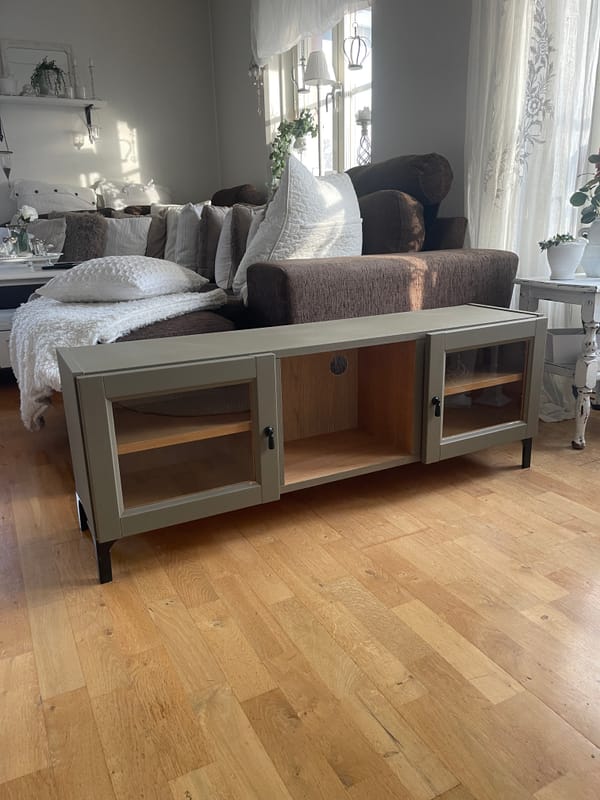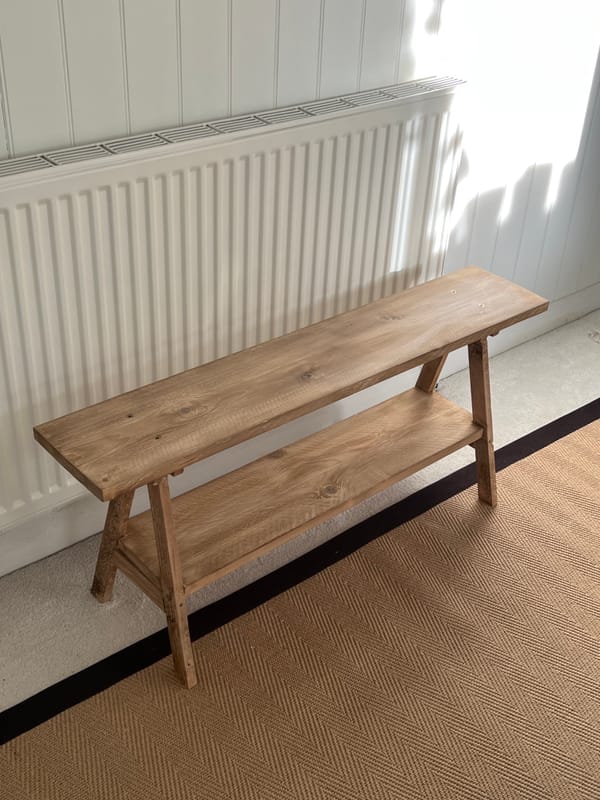Sturdy, stylish & a steal for under £35, this project is a must for the safety-conscious DIYer
If you find this post useful, pop over & give me a follow on Instagram or Tiktok where I share all the behind-the-scenes info about the projects I'm working on, DIY tips, tricks and money-saving techniques for creative home styling!
I knew I wanted to create a sleek, black, modern, and fairly minimalist look for our stairs handrail, but didn't love the huge costs associated with buying them new so decided to DIY one on a budget.
You will need

Drill - This is the (aff) link to my new drill & I love it
Screwdriver
Brackets - I bought these bargain ones from B&Q (aff)
Sturdy wall fixings for your wall type
Timber - I bought this one from B&Q (aff)
Paint - I used leftover paint but this is a good one if you don't have any.
Paintbrush
Pencil
Masking tape or string
Stud finder (optional but helpful for stud wall)
Wood filler (handy to fill any joins if your stairs are longer than a single length of timber)
Difficulty - Intermediate
Time taken - a morning or afternoon
Cost - low
Method
1. Measure the stairs

First, measure your stairs to determine the length of timber you need.
I opted for this choice of timber at B&Q because it was very good value at £10.97 per 2.4metre, smooth, already primed and good enough quality that there wouldn’t be any issues with it being too rough for hands sliding down the rail.
2. Mark the wall
Decide the optimum height for your handrail (90-100cm is a good guide) and measure and mark this height at the top and bottom of the stairs and at regular intervals in between. Mark out the handrail position between the two points you marked, either with a piece of string or masking tape. Check the height at regular intervals along this marked line to ensure its level.
3. Attach the brackets

How you attach the handrail will depend on your wall type. If you have drywall/plasterboard walls, it is strongly advisable to attach the brackets to the studs, which can be located with a stud finder if you have one, or you can often locate them by knocking on the wall and judging whether there is a solid fixture from the sound you hear. Once you've found the first two, the rest should be at regular intervals (of the same distance) which makes them easier to find. I used my own screws as the ones provided weren't sturdy enough for m liking, hence why they are silver in the above pic. You can give the screws a coat of paint to blend them in (be careful not to apply thickly so as to make them hard to remove in the future) or you can cover over the screw heads with black stickers alternatively. The best option would be to use black screws of course if you can find them.

4. Attach the handrail
Once the brackets are on and stable, position the timber and once again check the height at regular intervals. Mark the positions of the bracket screw holes on the underside of the handrail and drill very shallow pilot holes to make the screws easier to fix. Place the handrail back on the brackets and screw it on using the screwdriver. Check the brackets are firmly fixed to the wall. You shouldn't be able to move them even slightly this is very important.
5. Join if required

The timber wasn't quite long enough to complete the handrail in one piece so I had to cut and join another to the end. I chose to put the join over one of the wall brackets so that each end (where the join met) was screwed in with one of the two bracket screws, this seemed the most stable way of doing it. I used grab adhesive to glue the pieces of handrail together and I also glued them into the handrail bracket for extra stability. I filled the tiny gap (at the join) along the top of the handrail with wood filler that I had, but you could use any flexible filler if you don't want to buy wood filler for this minuscule job. Once the filler had dried I sanded it and to be honest you could probably get away with just painting and sanding if the join is really neat. Check the join is completely smooth by running your hand over it a few times.
5. Paint

I painted my handrail in situ, but really you should do this before attaching it to the brackets. I was feeling impatient (for a change!) and didn't want to have to wait for each side to be painted and then dry before fixing so I screwed it in and then painted it all in one go. I applied a second coat after the first had fully dried.
And that's it, a stylish and modern handrail to complement any staircase and suit any budget. Make sure you check your handrail regularly to ensure it is safe and secure, but as long as you've followed the above steps and used the correct fixings for your wall type you shouldn't have any issues.

Should a handrail go on the left or right-hand side of the stairs?
Technically, there isn’t a right or wrong side and it’s really down to your preference and whether the stairs lend themselves to a handrail on a particular side. I opted to put it on the left-hand side because it would be less conspicuous as you looked up the stairs and I’m planning to make a gallery wall on the right-hand side so thought the addition of a handrail might detract from this feature once it’s installed.




